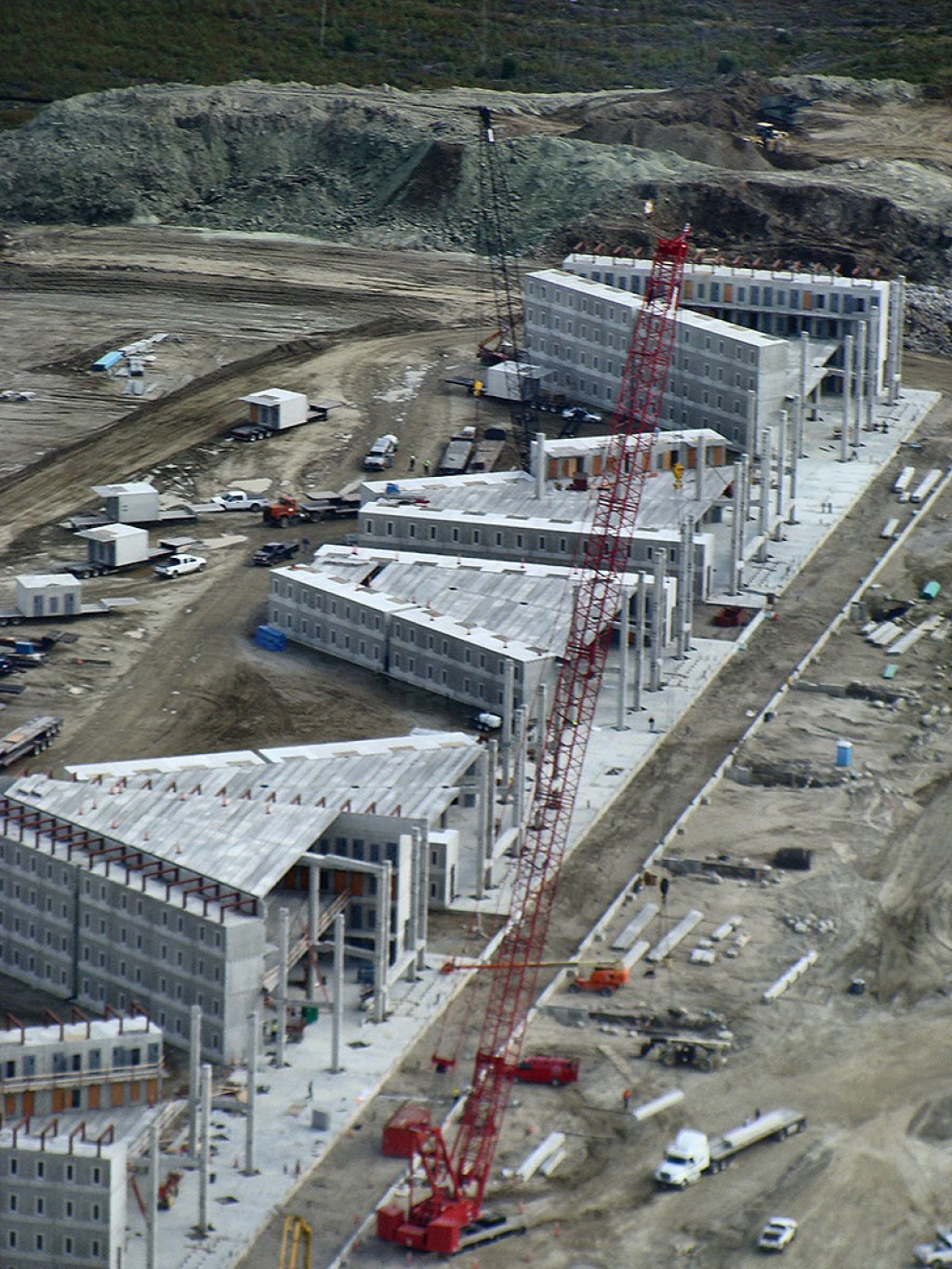Unlock The Secrets Of Berlin State Prison: Unveiling The Dark History And Redemption Stories
Berlin State Prison: A Historic Institution in Germany
Introduction
Welcome, Berlin Visitors! In this article, we will delve into the intriguing history and significance of the Berlin State Prison. As one of the oldest correctional facilities in Germany, this prison has stood as a symbol of justice and rehabilitation. Join us as we explore the what, who, when, where, why, and how of Berlin State Prison, and discover the advantages and disadvantages it presents. Whether you are a history enthusiast or simply curious about the criminal justice system, this article will provide you with valuable insights. Let’s begin our journey into the past.
2 Picture Gallery: Unlock The Secrets Of Berlin State Prison: Unveiling The Dark History And Redemption Stories


What is Berlin State Prison? 🏢
Berlin State Prison, also known as Berliner Strafvollzuganstalt, is a correctional facility located in the heart of Berlin, Germany. Established in 1849, it has been an integral part of the city’s history, witnessing significant changes in the criminal justice system over the years. This prison serves as a place of confinement for individuals who have been convicted of various crimes, ranging from petty offenses to serious felonies.
Historical Background

Image Source: cpci.ca
The construction of Berlin State Prison was initiated in response to the growing need for a centralized correctional facility in the city. At that time, the existing prisons were overcrowded and lacked proper facilities for rehabilitation. The new prison was a significant step towards reforming the criminal justice system by providing modern facilities and emphasizing the rehabilitation of inmates.
Facilities and Infrastructure
Over the years, Berlin State Prison has undergone several renovations and expansions to accommodate the increasing number of inmates. It consists of multiple cell blocks, administrative offices, recreational areas, and vocational training facilities. The prison also houses a chapel, library, and medical facilities to cater to the physical, emotional, and spiritual well-being of the inmates.
Correctional Programs and Rehabilitation

Image Source: wikimedia.org
One of the primary objectives of Berlin State Prison is to facilitate the rehabilitation and reintegration of inmates into society. The prison offers a range of educational and vocational programs designed to develop skills and enhance employability. Inmates have access to academic courses, vocational training, counseling services, and substance abuse treatment programs. These initiatives aim to equip individuals with the necessary tools to lead a productive and law-abiding life upon release.
Security Measures
Berlin State Prison maintains strict security measures to ensure the safety of both inmates and staff. The facility is equipped with surveillance systems, secure perimeters, and controlled access points. Trained correctional officers oversee the daily operations and maintain order within the prison. Additionally, the prison collaborates with external law enforcement agencies to prevent and address any potential security threats.
Visitation and Family Support
The importance of maintaining connections with loved ones during incarceration is recognized at Berlin State Prison. The facility allows scheduled visitation for family members and friends, providing an opportunity for inmates to maintain relationships and receive emotional support. Moreover, the prison offers counseling services and support groups for families affected by incarceration, acknowledging the impact of imprisonment on the broader community.
Reintegration into Society
Preparing inmates for successful reintegration into society is a crucial aspect of the correctional process. Berlin State Prison collaborates with external organizations, such as rehabilitation centers and employment agencies, to facilitate a smooth transition for individuals upon their release. Through job placement assistance, housing support, and community supervision programs, efforts are made to reduce recidivism rates and promote a positive future for former inmates.
Who is Affected by Berlin State Prison? 🚫
Berlin State Prison impacts various stakeholders, including inmates, their families, the criminal justice system, and the wider community. Inmates experience the direct consequences of their actions and are subject to the rules and regulations within the prison. Their families may also face emotional, financial, and social challenges during their loved one’s incarceration. The criminal justice system relies on Berlin State Prison to carry out sentences, maintain order, and facilitate rehabilitation. Lastly, the community at large is affected by the prison’s role in promoting public safety and reducing recidivism.
When was Berlin State Prison Established? 📅
Berlin State Prison was established in 1849, making it one of the oldest correctional facilities in Germany. Since its inception, it has played a significant role in the criminal justice system, adapting to societal changes and evolving approaches to incarceration and rehabilitation.
Where is Berlin State Prison Located? 🌍
Berlin State Prison is located in Berlin, Germany. Situated in a centralized location, it allows for efficient transportation of inmates, access to legal resources, and collaboration with local community organizations.
Why Was Berlin State Prison Created? ❓
The creation of Berlin State Prison was driven by the need to address the shortcomings of existing correctional facilities in Berlin. Overcrowding, inadequate living conditions, and limited rehabilitation opportunities necessitated the establishment of a modern, purpose-built prison to meet the evolving needs of the criminal justice system. The underlying goal was to reform offenders and provide them with the skills to reintegrate successfully into society.
How Does Berlin State Prison Function? ⚙️
Berlin State Prison operates based on a comprehensive framework encompassing security, rehabilitation, and reintegration. Inmates are assigned to specific cell blocks and receive structured routines that include work assignments, educational programs, counseling sessions, and recreational activities. The prison staff, including correctional officers, educators, and healthcare professionals, collaborate to ensure the safety, well-being, and development of the inmates. Through a combination of disciplinary measures, therapeutic interventions, and educational opportunities, Berlin State Prison aims to facilitate personal growth and reduce the likelihood of reoffending.
Advantages and Disadvantages of Berlin State Prison
Advantages of Berlin State Prison 👍
1. Rehabilitation Focus: Berlin State Prison places a strong emphasis on rehabilitation, providing inmates with educational and vocational programs that enhance their prospects upon release.
2. Secure Environment: The prison maintains strict security measures to ensure the safety of inmates, staff, and the wider community.
3. Family Support: Berlin State Prison recognizes the importance of family ties and offers visitation and support services to maintain connections and provide emotional support.
4. Collaboration with External Organizations: By partnering with external organizations, the prison facilitates a smooth transition for inmates by connecting them with rehabilitation centers, employment agencies, and other support networks.
5. Reduced Recidivism: Through comprehensive reintegration programs, Berlin State Prison strives to reduce recidivism rates and promote successful reintegration into society.
Disadvantages of Berlin State Prison 👎
1. Loss of Freedom: Incarceration restricts individuals’ freedom and separates them from their families and communities.
2. Potential for Violence: Despite security measures, prisons can be environments where violence may occur, posing risks to both inmates and staff.
3. Stigmatization: Former inmates may face societal stigmatization upon their release, making it challenging to reintegrate into the community.
4. Limited Resources: Prisons often face resource constraints, which may impact the quality and availability of educational and rehabilitation programs.
5. Overcrowding: Overcrowding remains a challenge in many prisons, including Berlin State Prison, which can lead to inadequate living conditions and limited resources for inmates.
Frequently Asked Questions about Berlin State Prison
1. Is Berlin State Prison open to the public for visits?
Yes, Berlin State Prison allows scheduled visits for family members and friends of inmates. However, visitors must adhere to specific guidelines and security protocols.
2. Are there any specific programs offered to assist inmates in their reintegration process?
Absolutely! Berlin State Prison provides a range of educational, vocational, and counseling programs aimed at preparing inmates for successful reintegration into society. These programs focus on skill development, job placement assistance, and community supervision.
3. How does Berlin State Prison prioritize the safety of inmates and staff?
Berlin State Prison maintains strict security measures, including surveillance systems, controlled access points, and trained correctional officers. The prison collaborates with external law enforcement agencies to address any potential security threats.
4. Can inmates receive medical care while in Berlin State Prison?
Yes, Berlin State Prison has medical facilities to cater to the healthcare needs of inmates. Qualified healthcare professionals offer medical services, including routine check-ups, emergency care, and mental health support.
5. Does Berlin State Prison provide opportunities for inmates to continue their education?
Absolutely! Berlin State Prison offers academic courses and vocational training programs to enhance inmates’ educational and employment prospects. These initiatives aim to equip individuals with the necessary skills for a successful future.
Conclusion: Taking Action towards Rehabilitation and Justice
As we conclude our exploration of Berlin State Prison, it is crucial to reflect on the significance of rehabilitation and justice within the criminal justice system. Berlin State Prison serves as a testament to the ongoing efforts to reform inmates and promote their successful reintegration into society. By prioritizing rehabilitation, maintaining secure environments, and collaborating with external organizations, this correctional facility strives to reduce recidivism rates and contribute to safer communities. Let us acknowledge the importance of supporting individuals who have made mistakes, offering them opportunities for personal growth and positive change.
Final Remarks: Understanding the Complexity of Corrections
Disclaimer: This article aims to provide an overview of Berlin State Prison and its operations. It is important to recognize that the criminal justice system and correctional facilities are complex and multifaceted. The information presented here is based on research and available data, but it may not encompass all aspects of Berlin State Prison. In navigating discussions about incarceration and rehabilitation, it is crucial to approach the topic with empathy, understanding, and a commitment to promoting justice for all individuals involved.
This post topic: Berlin



